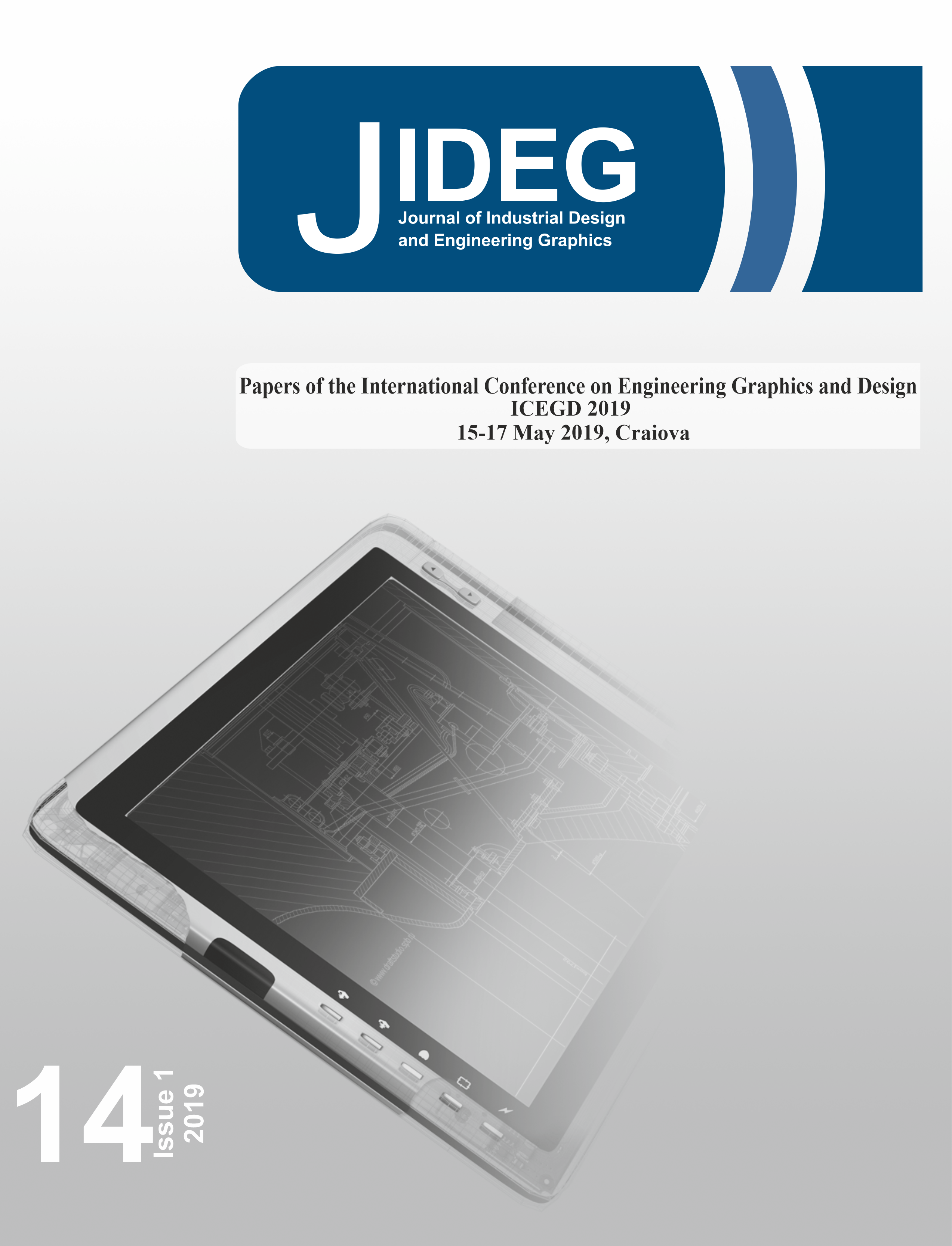AIRFLOW AND THERMAL COMFORT OF THE BUS PASSENGERS
Keywords:
thermal comfort, CFD, bus, airflow, PVM, PPDAbstract
Nowadays, the thermal comfort in the means of transport is an important field of research, which have a positive impact on the health of the passengers and the driver. The latest research, results and methods, to determining the comfort in means of transport are presented in the first part of the paper. The thermal comfort study is carried out on an existing bus geometry. The bus geometry is modelled in SolidWorks using blueprints available on the web. The simulation is done for three cases: the first case where the ventilation system is open at maximum capacity, the second case where the ventilation system works at maximum capacity whit the air deflectors mounted for a better distribution of the air and the last case when the bus velocity is 14m/s whit two rear windows opened. The results of the first simulations are analysed and a location of deflectors is proposed for an optimal distribution of air inside the bus. In the last part of the paper we compare the obtained results, highlighting the conclusions of this study.
Downloads
References
Balcau, M., Bodea, S., (2007). The construction of particular planes by comparative methods, Proceedings of the 2nd International Conference on Engineering Graphics and Design, pp.27-30, ISBN 978-973-667-252-1, Galati.
Ivanescu, M., Neacsu, C., Tabacu, S., Tabacu, I., (2010). The human thermal comfort evaluation inside the passenger compartment, In World Automotive Congress, Budapest, Hungary.
Khatoon, S., Kim, M. H., (2017). Human thermal comfort and heat removal efficiency for ventilation variants in passenger cars, pp. 1710, Energies, vol. 10, no. 11.
Morcotet, D., (2012), The thermal comfort in the surface public transport from Bucharest during the summer period, pp. 367-374, Aerul si Apa. Componente ale Mediului.
Neacsu, C., Tabacu, I., Ivanescu, M., Vieru, I., (2017). The evaluation of the overall thermal comfort inside a vehicle, In IOP Conference Series: Materials Science and Engineering, vol. 252, no. 1, IOP Publishing.
Reda I., Khalil E. E., Aboudeif T. M., Degwy A. E., (2017). Air Flow Regimes and Thermal Comfort in Vehicle Cabin Considering Solar Radiation, Fluid Mech Open Acc 4: 174. doi: 10.4172/2476-2296.1000174
Riachi, Y., Clodic, D., (2014). A numerical model for simulating thermal comfort prediction in public transportation buses, pp. 1-8, International Journal of Environmental Protection and Policy, 2(1).
Shen, X., Feng, S., Li, Z., Hu, B. (2016). Analysis of bus passenger comfort perception based on passenger load factor and in-vehicle time, SpringerPlus, 5(1), 62.
Wilson, V., Kumar, U., Karthikeyan, V., Nallakumarasamy, G., (2018). Analysis of Ventilation System and Comfortness of a Passenger in a Bus using CFD, ISSN: 2321-9653, International Journal for Research in Applied Science & Engineering Technology, Available at www.ijraset.com
Ahmed, T., Rahman, M. Z., (2012), Performance Investigation of Building Ventilation Systems by Calculating Comfort Criteria through HVAC Simulation, pp. 7-12, IOSR Journal of Mechanical and Civil Engineering, 3.
site: httpswww.the-blueprints.comblueprintsbuse
ssolaris51460viewsolaris_urbino_15 (2018).
SolidWork software - educational version (2018).

Downloads
Published
Issue
Section
License
Copyright (c) 2020 Journal of Industrial Design and Engineering Graphics

This work is licensed under a Creative Commons Attribution-NonCommercial 4.0 International License.






